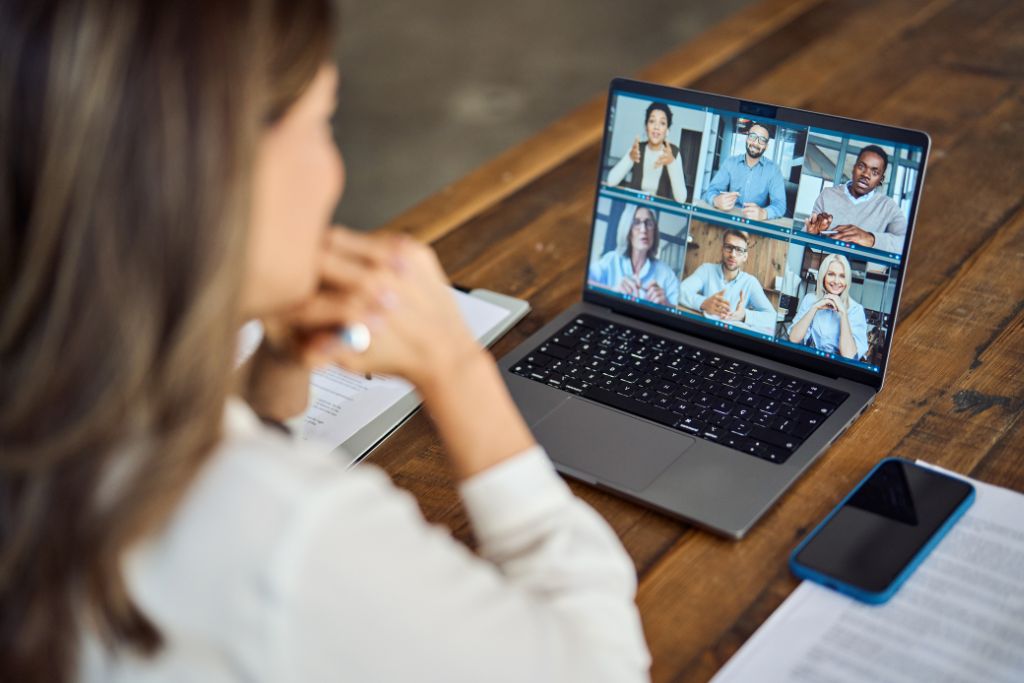
Remote Work
In today’s ever-changing job landscape, many businesses have adopted the practice of remote work. It does provide freedom and access to worldwide sources of talent, but it also presents certain difficulties, particularly in the field of training. Training your remote workforce effectively is essential for maintaining productivity, ensuring consistency, and promoting employee growth. Here’s how you can do that with insights from industry leaders who have successfully dealt with these issues.
1. Start with a Clear Training Plan
A clear training plan sets the foundation for effective remote workforce training. This includes stating the goals, resources needed, timelines, and methods of delivery.
“Clarity is key,” says Tanya Lamont CEO of Virtual Receptionist. “It’s critical that everyone understands their roles from the very beginning when taking remote training. A clear structured plan reduces confusion and sets up successful learning.”
2. Utilize the Right Tools and Technology
“The tools used can either make or break your efforts in remote training investment”, adds Mateusz Mazurek from Prehost. Platforms like Zoom, Microsoft Teams among others Learning Management Systems (LMS) provide necessary infrastructure for interactive training which are engaging.
Selecting suitable tools is what Pantelis Kakaris; owner of Adventourely mentions as being crucial.“We tried out different platforms until we found one that worked best for us. It is important that you choose technology that supports your training goals while making it easy enough for your team members to use.”
3. Incorporate Diverse Learning Methods
Different people learn differently. Some may prefer reading materials while others might thrive during interactive sessions or through visual aids. Providing various learning methods such as webinars video tutorials written guides hands-on projects caters for different styles of learning thus making the training more impactful.
Cindy Spence from Wags and Willows talks about her experience “Through combining live sessions together with pre-recorded content our staff were able to learn at their own speed while still having access to real-time assistance. This hybrid approach has worked wonders for us.”
4. Foster a Culture of Continuous Learning
Remote staff training should not be treated as an isolated event. Continuous learning is important in keeping the team engaged and motivated therefore it should not stop after the initial training sessions. Encourage staff members to take more courses, participate in webinars as well as stay updated on industry trends.
Adam Rangotis; owner of Lie Detector Test knows this too well.“Continuous learning is key especially in sectors that change rapidly. We always update our training materials regularly and let our team know about any professional development opportunities they can pursue.”
5. Encourage Interaction and Collaboration
One challenge with remote work is that employees may feel disconnected from one another, adds Hiren Shah, the founder of Anstrex. To overcome this, training needs to involve interaction and collaboration. Group projects discussion forums virtual breakout rooms etc., can help build communities where knowledge sharing thrives and people feel connected even if they are miles apart.
Sheldon Sutherland, the owner of Epoxy Werx, states that to have successful remote training there must be collaboration. “When our team members work together on training projects, they not only learn from the content but also from each other. Our team has become stronger as a result of this cooperative strategy, and our total productivity has increased.”
6. Provide Ongoing Support and Resources
It is essential to offer additional guidance after the first training is over to enable staff members to put what they have learned into practice. This could involve things like FAQs or how-to guides being made available; alternatively, there could be a dedicated support team on hand who will answer any questions that may arise throughout this period.
As Jonathan Ayala, owner of Hudson Condos puts it: ‘Training does not stop when the session ends.’ ‘We provide our team with an abundance of resources which they can refer back to at any given time. The result is a significant decrease in learning curves crossed coupled with heightened staff empowerment.’
7. Measure Success and Gather Feedback
Lastly one should evaluate whether their training programs are working or not by measuring performance indicators as well as seeking out opinions through surveys etc., as this lets you know what parts need tweaking and where exactly adjustments should be implemented within your training strategies.
According to Chris Langely (Director of Commercial Doors): ‘To ensure we are meeting their needs we constantly ask our team for feedback about these courses.’ ‘This has been an invaluable part of refining them over time so that they remain useful for everyone involved.’
Effectively training a remote workforce requires careful planning, appropriate tools, and various methods of teaching and continuous learning while fostering collaboration. It ensures that your staff is prepared for their duties away from office space which might otherwise demoralize them hence hampering growth in general.
In order words according to Cindy Spence; “No single event can ever prepare people fully.” “However by investing into the journey itself, you are equipping individuals with skills which ultimately result in achievement. This involves taking a responsible position on the matter in order to maximize the advantages for both the company and the employee.

